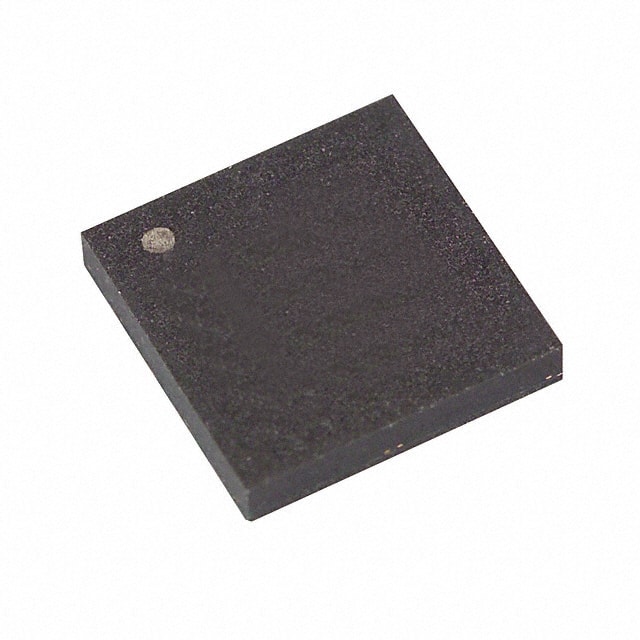Consulte las especificaciones para obtener detalles del producto.

AT17C256-10CI
Product Overview
Category
AT17C256-10CI belongs to the category of non-volatile memory devices.
Use
It is primarily used for storing and retrieving digital information in electronic systems.
Characteristics
- Non-volatile: Retains data even when power is turned off.
- High storage capacity: The AT17C256-10CI has a storage capacity of 256 kilobits (32 kilobytes).
- Low power consumption: Consumes minimal power during read and write operations.
- Fast access time: Provides quick access to stored data.
- Reliable: Offers high endurance and data retention capabilities.
Package
The AT17C256-10CI is available in a compact integrated circuit (IC) package.
Essence
The essence of AT17C256-10CI lies in its ability to provide reliable, non-volatile memory storage in electronic systems.
Packaging/Quantity
The AT17C256-10CI is typically packaged in reels or tubes, with each package containing a specific quantity of ICs.
Specifications
- Operating voltage: 2.7V to 5.5V
- Access time: 100ns
- Organization: 32K x 8 bits
- Interface: Serial Peripheral Interface (SPI)
- Temperature range: -40°C to +85°C
- Data retention: 10 years
Detailed Pin Configuration
The AT17C256-10CI has a total of 8 pins, which are as follows:
- Chip Select (/CS)
- Serial Clock (SCK)
- Serial Data Input (SI)
- Serial Data Output (SO)
- Write Enable (/WE)
- Hold (/HOLD)
- VCC (Power supply)
- Ground (GND)
Functional Features
- Read and write operations: The AT17C256-10CI allows for both reading and writing of data.
- Protection mechanisms: It incorporates various protection features to prevent accidental data corruption.
- Low power standby mode: When not in use, it can enter a low power standby mode to conserve energy.
- Flexible interface: The SPI interface enables easy integration with a wide range of microcontrollers and other devices.
Advantages and Disadvantages
Advantages
- Non-volatile memory ensures data retention even during power loss.
- High storage capacity for storing large amounts of data.
- Fast access time allows for quick retrieval of information.
- Low power consumption helps prolong battery life in portable devices.
Disadvantages
- Limited write endurance compared to some other memory technologies.
- Relatively higher cost per bit compared to certain volatile memory options.
Working Principles
The AT17C256-10CI utilizes electrically erasable programmable read-only memory (EEPROM) technology. It stores data by trapping charges within floating gate transistors, which can be electrically programmed or erased. During read operations, the stored charges are sensed to retrieve the stored data.
Detailed Application Field Plans
The AT17C256-10CI finds applications in various electronic systems, including but not limited to: - Embedded systems - Consumer electronics - Industrial automation - Automotive electronics - Medical devices
Detailed and Complete Alternative Models
Some alternative models that offer similar functionality to the AT17C256-10CI include: - AT17C128-10CI: 128 kilobits non-volatile memory with similar specifications. - AT17C512-10CI: 512 kilobits non-volatile memory with higher storage capacity.
These alternative models provide options with different storage capacities to suit specific application requirements.
Word count: 440 words
Enumere 10 preguntas y respuestas comunes relacionadas con la aplicación de AT17C256-10CI en soluciones técnicas
Sure! Here are 10 common questions and answers related to the application of AT17C256-10CI in technical solutions:
Q: What is the AT17C256-10CI? A: The AT17C256-10CI is a 256-kilobit (32,768 x 8) serial electrically erasable programmable read-only memory (EEPROM) integrated circuit.
Q: What are the key features of the AT17C256-10CI? A: The key features include a wide operating voltage range, low power consumption, high-speed operation, and non-volatile storage capability.
Q: How can I interface with the AT17C256-10CI? A: The AT17C256-10CI uses a simple serial interface, typically SPI (Serial Peripheral Interface), which allows for easy integration into various microcontroller-based systems.
Q: What is the maximum operating frequency of the AT17C256-10CI? A: The AT17C256-10CI can operate at frequencies up to 10 MHz, making it suitable for applications requiring fast data transfer.
Q: Can I write data to the AT17C256-10CI multiple times? A: Yes, the AT17C256-10CI supports multiple write cycles, allowing you to update or modify the stored data as needed.
Q: Is the data stored in the AT17C256-10CI retained when power is disconnected? A: Yes, the AT17C256-10CI is non-volatile, meaning it retains the stored data even when power is removed.
Q: What is the typical endurance of the AT17C256-10CI? A: The AT17C256-10CI has a typical endurance of 100,000 write cycles, ensuring reliable and long-lasting data storage.
Q: Can I use the AT17C256-10CI in harsh environments? A: Yes, the AT17C256-10CI is designed to operate in a wide temperature range (-40°C to +85°C) and is suitable for various industrial and automotive applications.
Q: Does the AT17C256-10CI have any security features? A: No, the AT17C256-10CI does not have built-in security features such as encryption or password protection.
Q: What are some common applications for the AT17C256-10CI? A: The AT17C256-10CI is commonly used in applications such as firmware storage, configuration settings, parameter storage, and data logging in various electronic systems.
Please note that these answers are general and may vary depending on specific requirements and implementation details.

